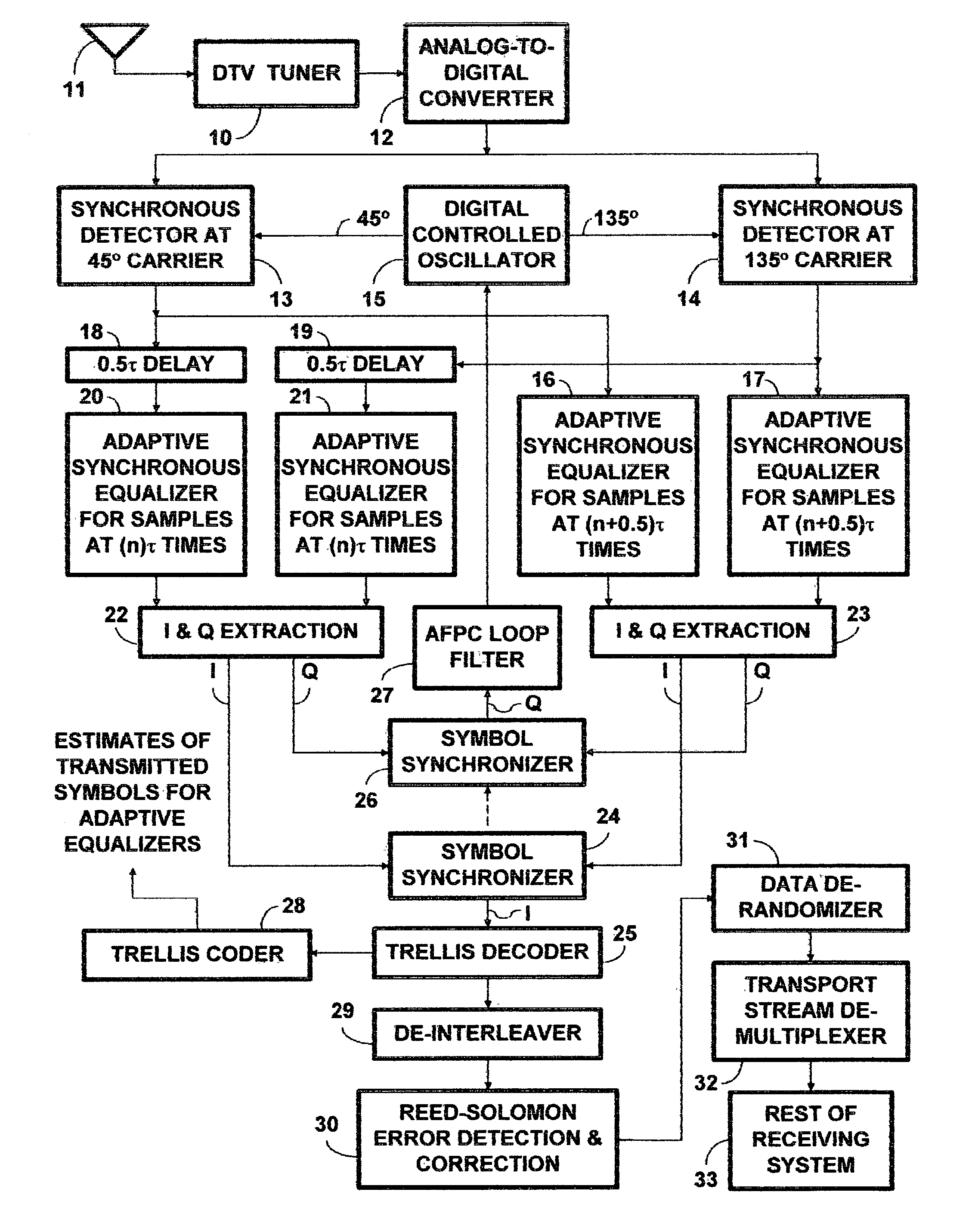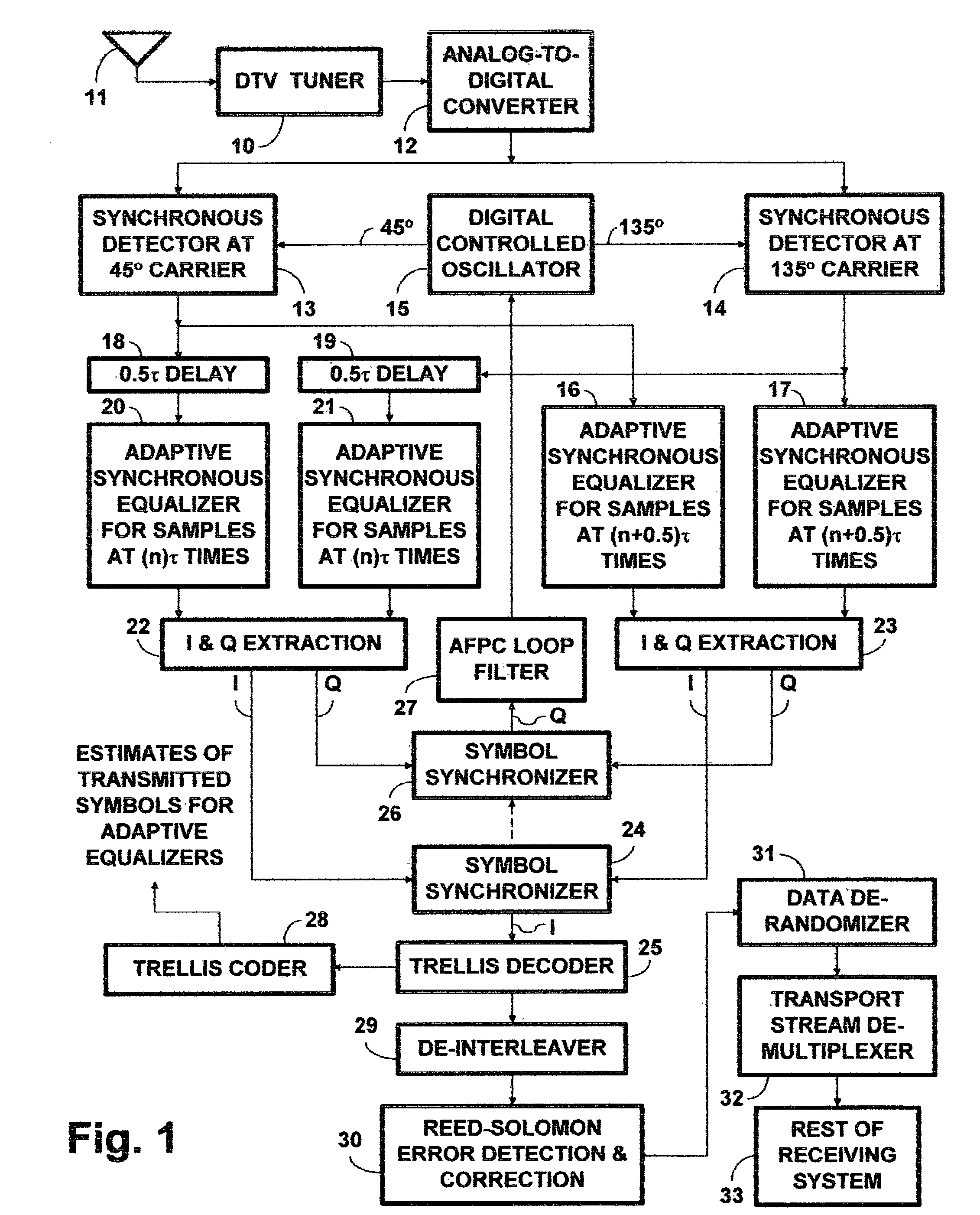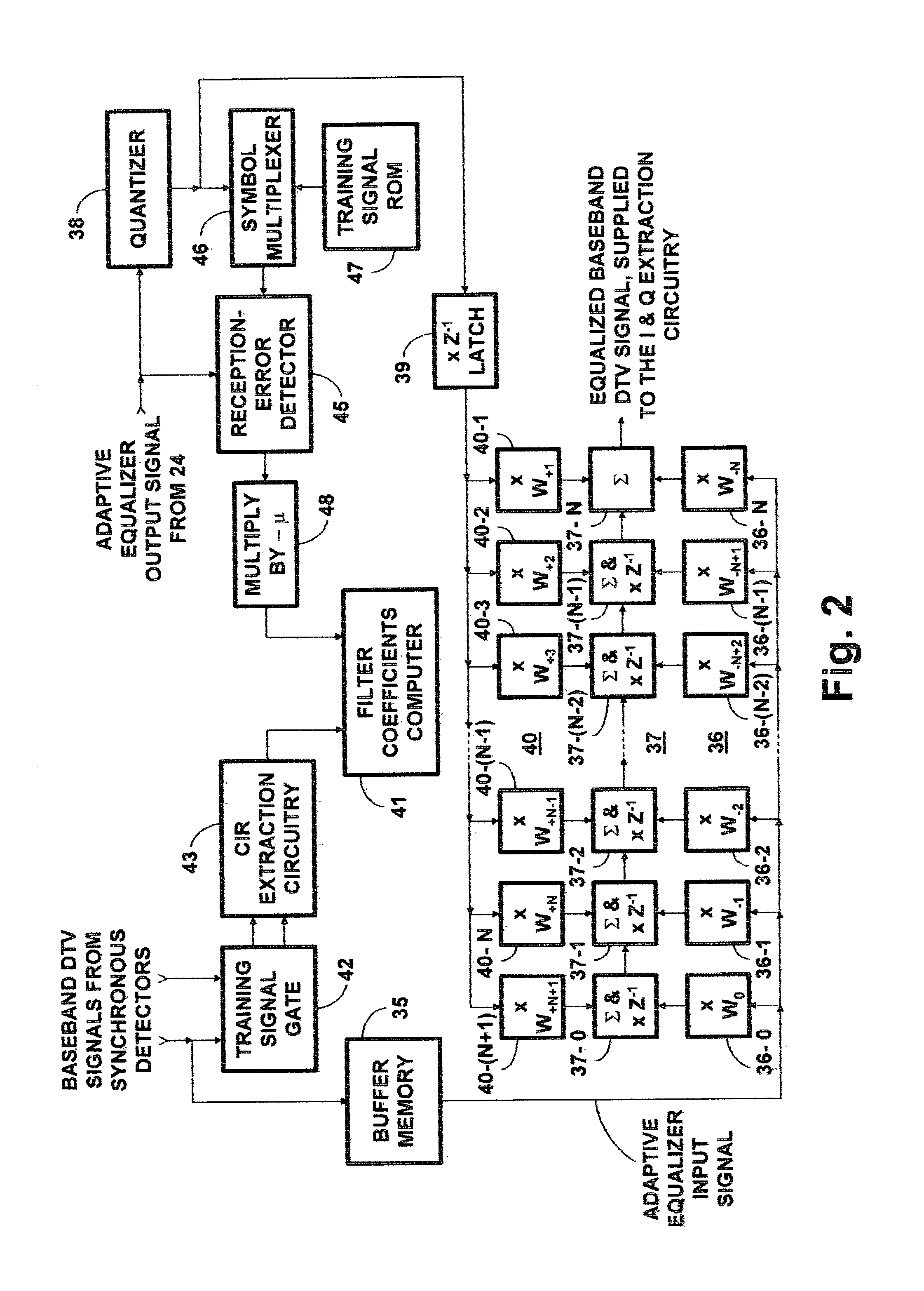Adaptive equalization of digital modulating signal recovered from amplitude-modulated signal subject to multipath
a technology of amplitude modulation and adaptive equalization, applied in the field of adaptive equalization of digital modulation signal recovered from amplitude modulated signal subject to multipath, can solve the problem that the demodulation signal is subject to being accompanied by unwanted echoes
- Summary
- Abstract
- Description
- Claims
- Application Information
AI Technical Summary
Problems solved by technology
Method used
Image
Examples
Embodiment Construction
[0037]The FIG. 1 DTV receiver includes a tuner 10 connected for receiving radio-frequency (RF) DTV signals from a receiving antenna 11. The tuner 10 selects one of the RF DTV signals from the receiving antenna 11 or other source for conversion to an intermediate-frequency (IF) DTV signal. The tuner 10 provides gain for the selected RF DTV signal and for the IF DTV signal. The tuner 10 includes automatic gain control (AGC) that regulates the amplitude of the amplified IF DTV signal that the tuner 10 supplies to an analog-to-digital converter 12 as input signal thereto, so that the dynamic range of the ADC 12 is fully exploited. The ADC 12 samples the IF DTV signal at twice Nyquist rate and digitizes the samples to provide a digitized IF DTV signal, preferably one with at least 10 bits of resolution over full range of its response.
[0038]The ADC 12 is connected to apply digitized IF DTV signal as a respective input signal to each of two synchronous detectors 13 and 14, which perform re...
PUM
 Login to View More
Login to View More Abstract
Description
Claims
Application Information
 Login to View More
Login to View More - R&D
- Intellectual Property
- Life Sciences
- Materials
- Tech Scout
- Unparalleled Data Quality
- Higher Quality Content
- 60% Fewer Hallucinations
Browse by: Latest US Patents, China's latest patents, Technical Efficacy Thesaurus, Application Domain, Technology Topic, Popular Technical Reports.
© 2025 PatSnap. All rights reserved.Legal|Privacy policy|Modern Slavery Act Transparency Statement|Sitemap|About US| Contact US: help@patsnap.com



